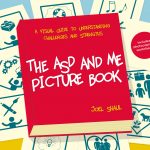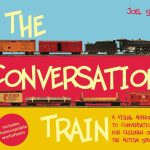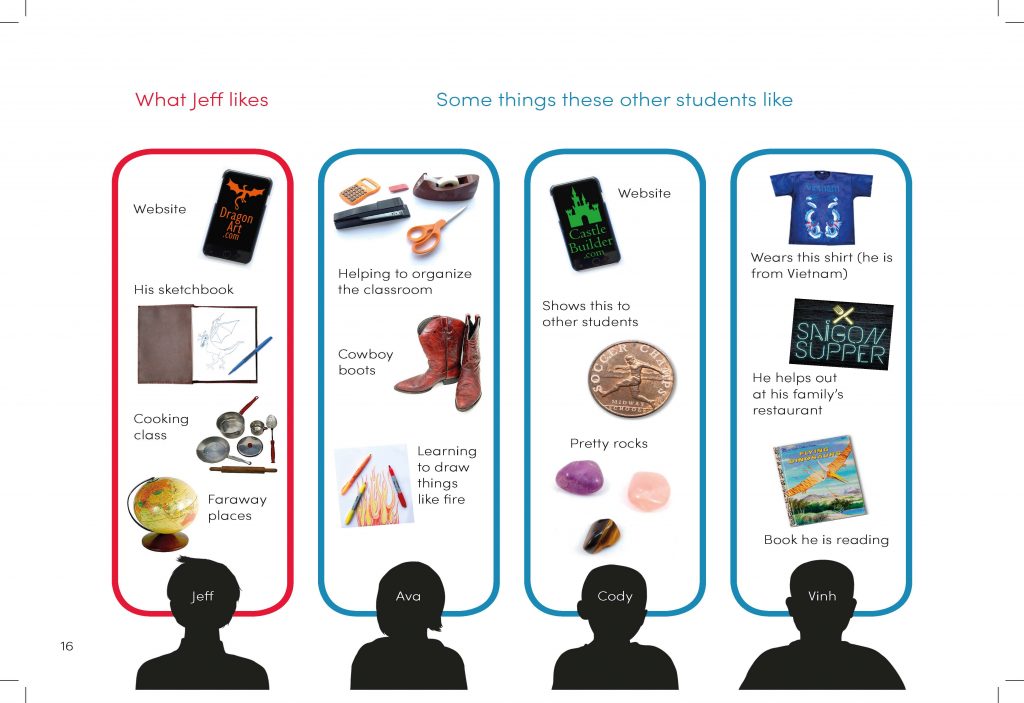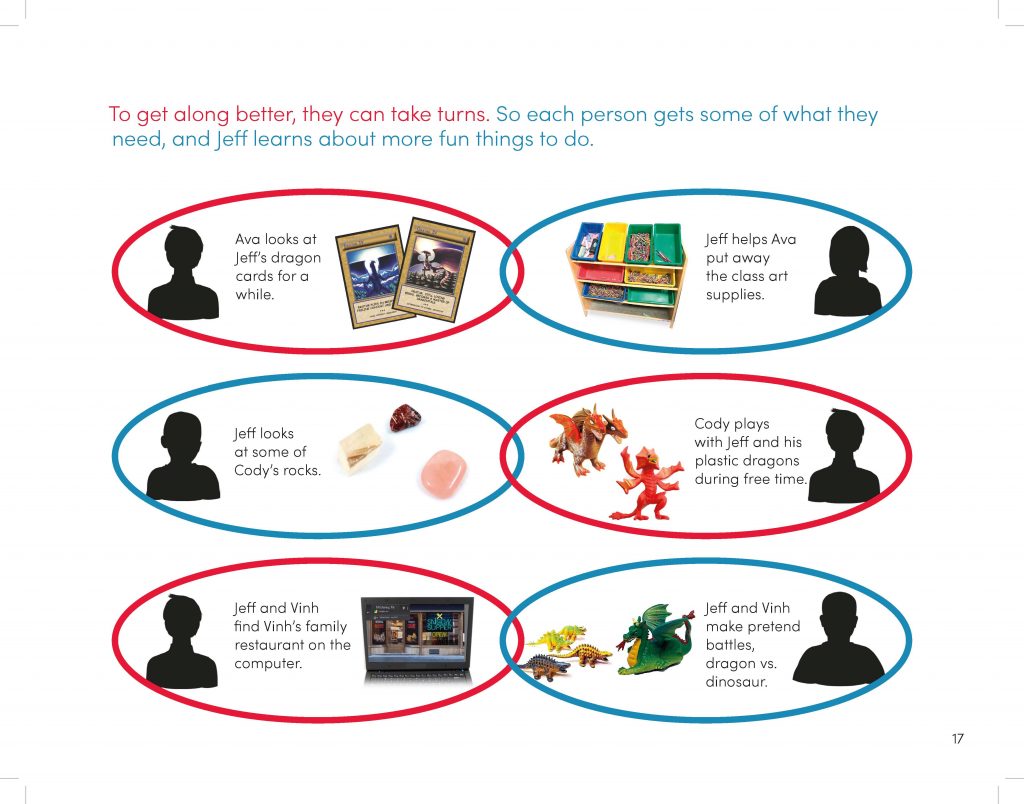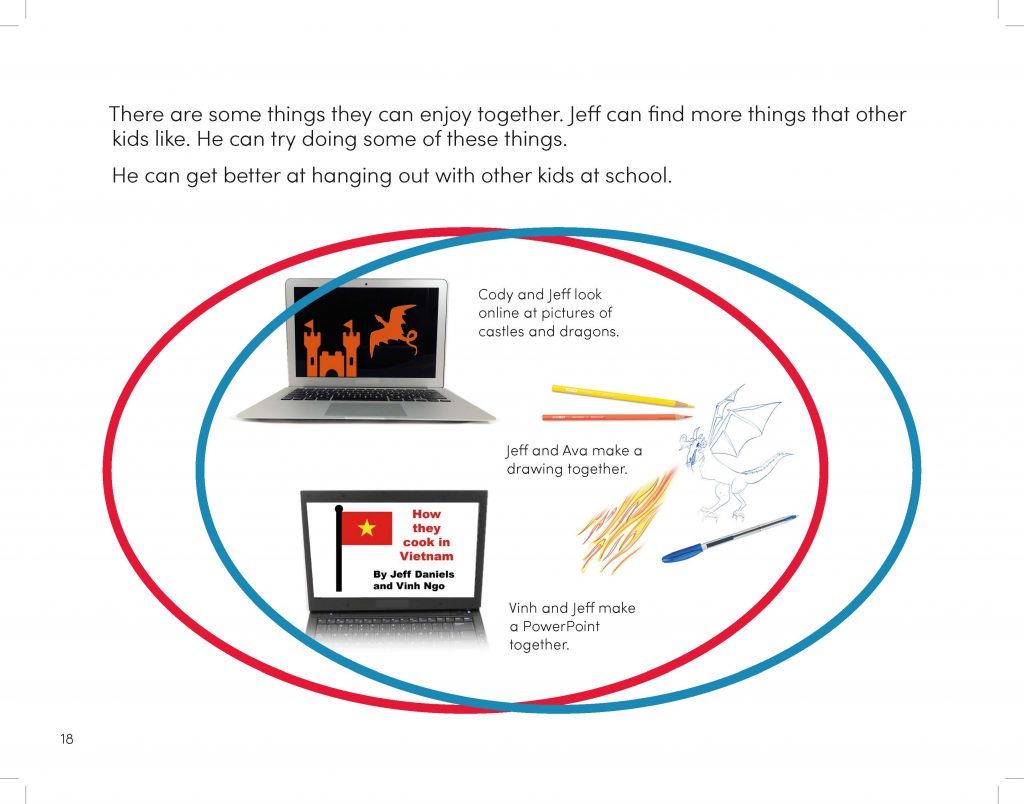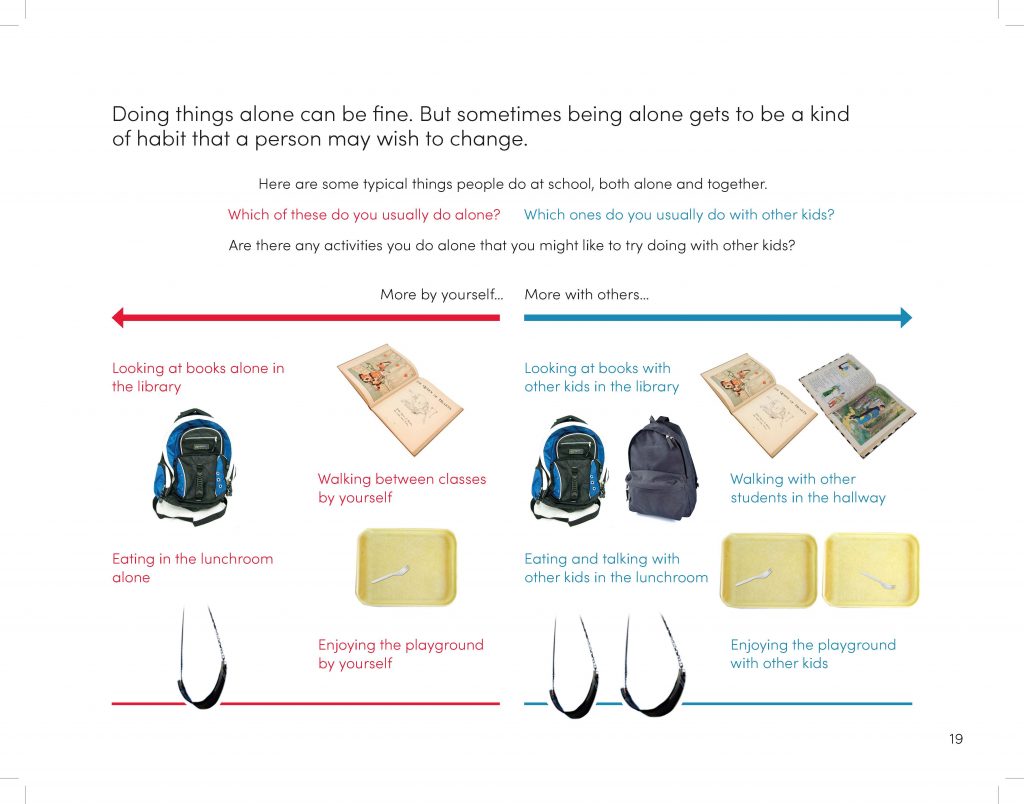How can teachers and other education professionals best use Your Interests, My Interests in a classroom setting?
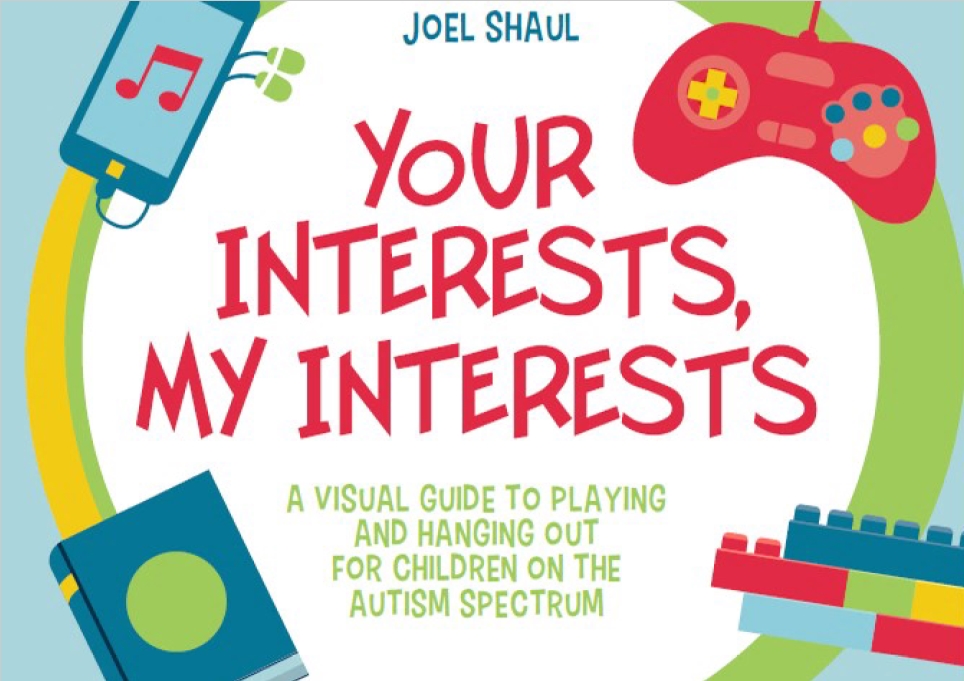
Professionals working with children in schools can use the book in two different ways. First, each chapter can be used to create lessons on different aspects of playing and hanging out. Each chapter has extension activities that are easy to set up. In addition, the book, which has hundreds of pictures representing diverse elements of play, is appealing for children to browse through on their own.
A really great way to use Your Interests, My Interests in the classroom includes projecting the pages using an Elmo or overhead projector. This allows children to view the rich imagery in large format. They can even go up to the screen and point out certain pictures representing play activities they might like to try with other children.
Can you briefly outline your history working with autistic kids?
I received my Bachelor’s and Master’s degree training in the 70’s and 80’s. In subsequent years, working in clinical settings and schools, I occasionally saw children on the autism spectrum and then about 15 years ago this became my professional specialty.
At that time, I felt frustrated at the scarcity of simple, appealing, illustrated social / emotional learning resources that I could recommend for use by parents and school personnel to use with children on the spectrum. Over many years, I spent most of my weekends and vacations training myself in graphic design so that I could create my own social skills training materials.
All of your books focus on helping autistic kids learn about their differences and engage with the world around them. What inspired Your Interests, My Interests and how does it differ from your past books?
My ambition was to create a truly useful guide that is so visually rich and engaging that kids would want to go back to it again and again.
In the planning stages for Your Interests, My Interests, I studied user reactions to my first five JKP books. Children seemed very attracted to clear and appealing photographs in The Conversation Train and The Green Zone Book. My ambition was to create a truly useful guide that is so visually rich and engaging that kids would want to go back to it again and again.
Your Interests, My Interests takes the common ground and “staying on track” lessons from my earlier books about conversation and expands them – to include not only conversation situations but all kinds of playing and hanging out situations, at school, home and community.
Your Interests, My Interests contains many activities for kids to do. There are many additional free materials on your website. Would you recommend any of your online materials to use in tandem with this book?
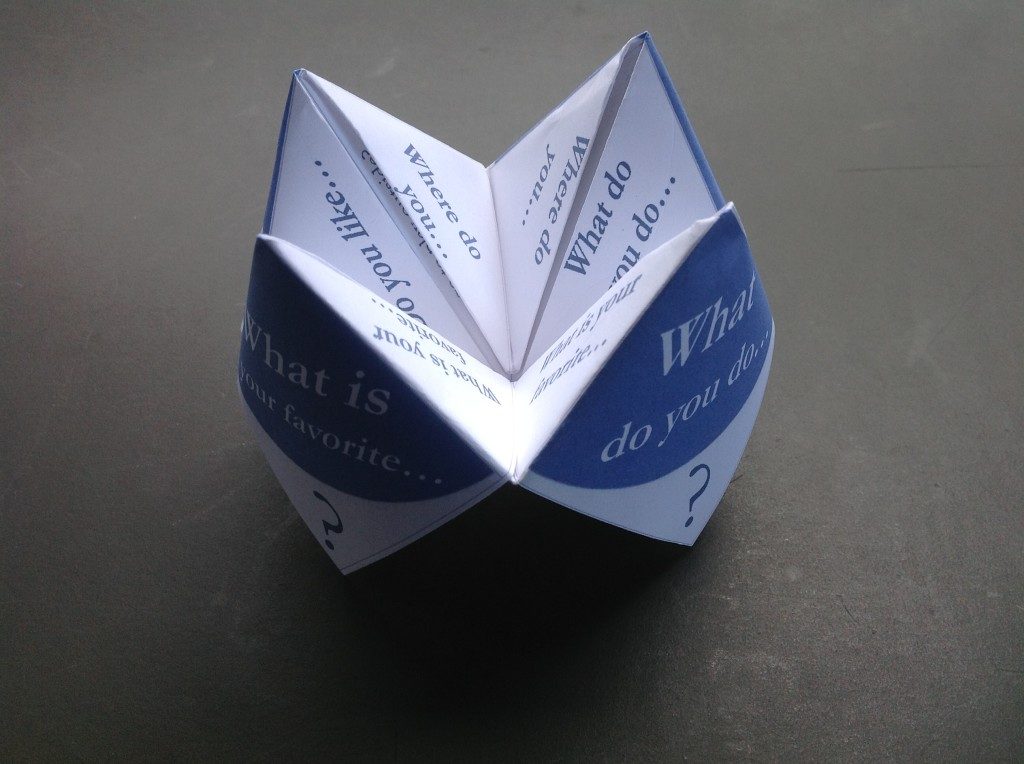
Many of my free online materials, at autismteachingstrategies.com, work really well as extension activities for my books. For example, the free Paper Fortune Teller (link: https://bit.ly/373q6cP) which children can use together to ask each questions about interests. Another is a head outline kit to help kids learn and remember peers’ play interests (link: https://bit.ly/372QPq3 ). Also, it is just great to use Google Street View to help kids virtually tour each other’s neighborhoods and communities (link: https://bit.ly/2TA5BjY ).
Many autistic kids get in trouble with parents and teachers for behavior they can barely control. How can this book/your past books help these children when they feel overwhelmed? How can it help the adults in their lives better understand and encourage their learning process?
When we care for children on the autism spectrum and help them to learn, we all encounter impediments to learning such as opposition, defiance and inattention. In my own work in offices and classrooms, I find these problematic behaviors occur far more often if I am not well prepared with my teaching/therapy materials. So, as I created and used teaching materials that were clear, visual and appealing, kids tended to like it all better and cooperate more. Getting kids to enjoy and benefit from my therapy and teaching is why I started creating these books many years ago. I hope that the users of my learning materials find them helpful in this same way.
What was your favorite activity to design in Your Interests, My Interests? Why?
These pages, and many other pages in the book, can be used by children regardless of reading ability
My favorite two pages are page 20, “Inside School – Things kids can do together” and page 21, “Playground, schoolyard and bus – things kids can do together.” These two pages have lots of small, appealing photos showing diverse play choices available to children. These pages, and many other pages in the book, can be used by children regardless of reading ability.
Special sneak peak!
Other books by Joel Shaul:
